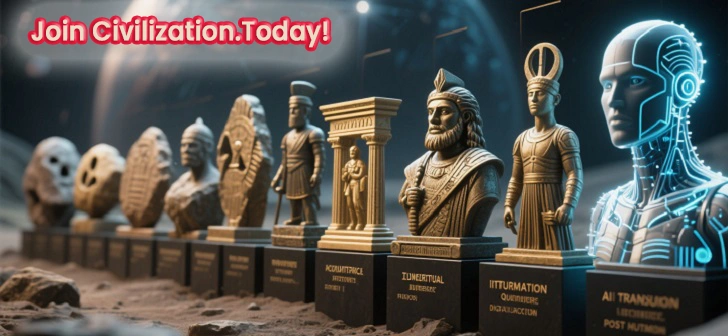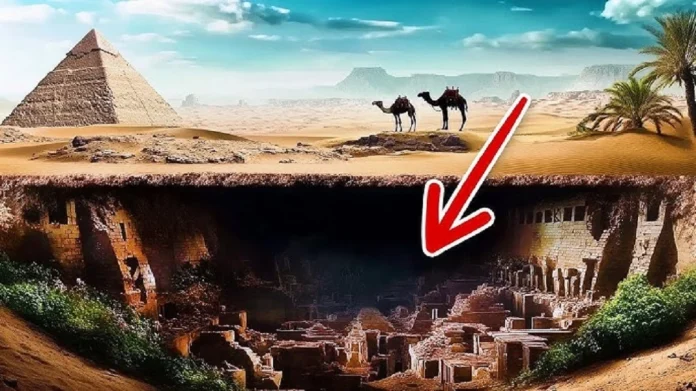Introduction
The Pyramids of Egypt have stood for thousands of years, defying time, sand, and human understanding. While tourists flock to gaze at their imposing grandeur, few realize that the pyramids’ secrets run deeper—literally—than their monumental exteriors. Beneath the limestone and granite lies a hidden world of mysterious tunnels, chambers, and possibly even forgotten treasures that archaeologists are only beginning to uncover. This article takes you deep into the underground mysteries, blending history, science, and speculation to reveal what’s really hidden beneath these ancient wonders.
The Mysterious Subterranean Chambers
For centuries, the focus has been on the towering structures above ground. But recent archaeological findings have shifted attention to what lies below. Using advanced scanning technology like muon tomography, researchers have detected hidden voids and chambers deep beneath the pyramids. These underground spaces may have been used for ritual purposes, as storage for sacred artifacts, or as part of complex burial rites for pharaohs.
The biggest question remains: Why were these chambers concealed so carefully? Some Egyptologists believe the concealment was intentional to protect against tomb robbers, while others think these chambers may have had symbolic connections to the afterlife.
The Great Pyramid’s ‘Lost’ Tunnel
In 2017, scientists revealed the existence of a long, unexplored tunnel hidden inside the Great Pyramid of Giza. This discovery was made possible through high-tech particle detectors that captured the movement of cosmic rays, revealing hollow spaces.
The tunnel, located just above the Grand Gallery, has never been entered in modern times. Experts speculate it could lead to a burial chamber, a storage room for treasures, or even a symbolic passage meant to represent the pharaoh’s journey to the afterlife. The world waits eagerly for permission from Egyptian authorities to explore it further—any discovery could rewrite the history of pyramid construction and purpose.
The Underground ‘City’ Beneath Giza
According to some theories—supported by both ancient texts and recent excavations—there may be an entire network of tunnels connecting the Giza pyramids to hidden chambers and possibly even other monuments.
Legends speak of an “underground city” beneath the Sphinx and the pyramids, containing libraries of ancient knowledge, lost technologies, and treasures from Egypt’s earliest dynasties. While mainstream archaeology remains cautious, some excavations have revealed shafts that go down hundreds of feet, suggesting more than just simple tomb passages.
Sacred Nile Water Channels
One fascinating discovery points to an ancient waterway system beneath and around the pyramids. These underground canals may have been used to transport massive stone blocks from the Nile directly to the construction site. But some researchers believe the channels also had a spiritual function, symbolizing the waters of creation in Egyptian mythology.
If these theories are true, the pyramids’ secrets are not just architectural, but also environmental, revealing how ancient Egyptians harmonized engineering with their spiritual beliefs.
Unexplored Burial Vaults
Egyptologists suspect that some hidden chambers may still contain untouched royal burials. The pyramids we see today are often empty—looted in antiquity—but deeper, more inaccessible vaults might have escaped detection.
Recent ground-penetrating radar surveys have identified anomalies beneath the pyramid complex that could be burial vaults. If found intact, they might contain artifacts, inscriptions, and remains that could drastically expand our understanding of Egyptian funerary practices.
The Enigma of the Sphinx Connection
Some ancient legends claim a direct underground link between the Great Sphinx and the pyramids. Modern scans have revealed cavities beneath the Sphinx’s paws, leading to speculation about hidden passageways.
Could these lead to the much-rumored Hall of Records—a mythical archive said to contain the wisdom of ancient civilizations? While no such discovery has been confirmed, the mystery continues to fascinate both historians and adventurers.
Lost Technologies of Construction
One of the most enduring questions about the pyramids is how such massive structures were built with the tools available at the time. Some theorists believe that the answers may lie underground, in hidden workshops or storage rooms containing tools, sledges, or machinery never before seen.
If such artifacts are ever uncovered, they could settle centuries-old debates and reveal that the ancient Egyptians’ technological capabilities were far greater than we imagine.
Ritual and Spiritual Purposes
Beneath the pyramids may also lie evidence of ancient rituals. Hidden chambers could have been used by priests for initiation rites, astronomical observations, or symbolic journeys into the underworld. The alignment of certain tunnels with star constellations suggests that underground architecture was just as important for spiritual symbolism as the visible pyramid structure above.
Preservation Challenges
The underground secrets of the pyramids face threats from both nature and human activity. Water seepage, shifting sands, and urban development in nearby Cairo can damage these delicate structures. Furthermore, political instability sometimes slows or halts archaeological work, leaving many mysteries unresolved.
The Future of Pyramid Exploration
With technology advancing rapidly, the coming decades could see a golden age of discovery beneath Egypt’s pyramids. Non-invasive scanning, micro-robot exploration, and AI-assisted mapping may allow archaeologists to explore these underground spaces without causing damage.
The question is: when the pyramids’ secrets are finally revealed, will they confirm what historians already believe—or challenge everything we thought we knew about ancient Egypt?
Conclusion
The grandeur of Egypt’s pyramids is undeniable, but their true magic may lie in the secrets hidden beneath their stone foundations. From mysterious tunnels and hidden chambers to the possibility of lost treasures and ancient knowledge, these underground mysteries continue to inspire awe and curiosity. As modern science peers deeper into the sands of time, we may be on the verge of discoveries that will not only change our understanding of the pyramids, but of human history itself.




